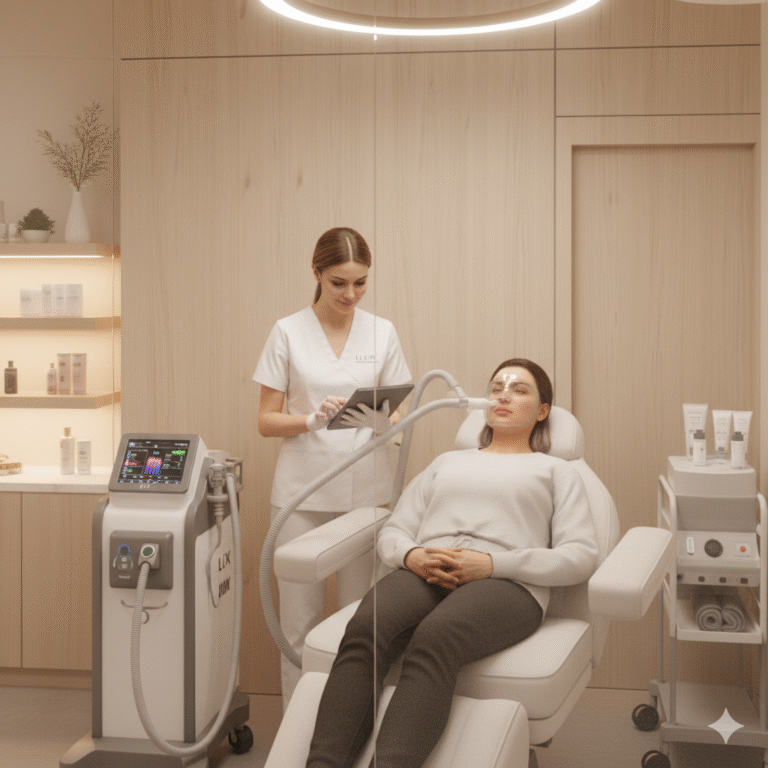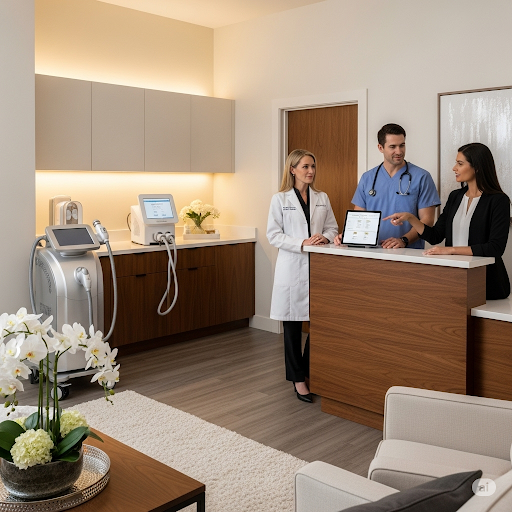Introduction: Navigating the Expansion Crossroads
You’ve built a solid medspa foundation with core aesthetics like injectables and laser treatments. Your client base is growing, and now you’re hearing the whispers—or maybe the loud requests—for more. A client asks if you offer Vitamin IV drips for a post-party recovery. Another wonders if you can help with their frustrating weight loss plateau. A long-time patient confides about their low energy and asks about hormone testing.
The opportunity for growth is clear. Adding a new service category can attract new clients, increase revenue from existing ones, and position your practice as a comprehensive wellness destination. But the risks are just as clear. A wrong move can tie up capital in expensive equipment, burden your staff with complex new protocols, and even jeopardize your medical reputation if not executed flawistically.
This isn’t a decision to be made based on trends alone. It requires a cold, hard look at the numbers, the operational demands, and the strategic fit for your specific business. In this breakdown, we’ll analyze three of the most popular add-on services: IV Therapy, Hormone Optimization, and Medical Weight Loss. We’ll dissect their profitability, challenges, and key considerations to help you decide which, if any, is the right strategic move for your practice.
Part 1: IV Nutrition Therapy – The Low-Barrier Entry
IV Therapy involves the intravenous administration of vitamins, minerals, and other nutrients. It’s marketed for purposes ranging from hydration and energy boosts to “hangover cures” and immune support.
The Profitability Breakdown
- Initial Investment: Low to Moderate. The primary startup costs involve:
- Equipment: IV poles, pumps (optional but recommended for safety), and minor supplies. Cost: $1,500 – $5,000.
- Inventory: The vitamins, minerals, bags of saline, and disposables (catheters, tubing, etc.). Initial inventory might cost $2,000 – $4,000.
- Staff Training: Ensuring your nurses or NPs are proficient in IV placement and monitoring for reactions. This is a crucial medical competency.
- Overhead: Low. Once established, the cost of goods sold (COGS) for a basic Myers’ Cocktail is relatively low, often $25 – $60 per bag in materials.
- Pricing and Revenue:
- Average Price Point: Treatments typically range from $199 to $399 per session, depending on the additives and your market.
- Profit Margin: With a material cost of $50 and a sale price of $299, the gross margin is high, often 80% or more. However, this does not factor in the significant cost of staff time. A drip can take 45-60 minutes of a clinician’s time, during which they are not performing higher-value procedures like injectables.
- Client Acquisition: Often used as a low-cost entry point for new, often younger, clients who may later convert to other services.
The Operational Reality: Challenges and Considerations
- Medical Legitimacy and Marketing: The biggest challenge is navigating the evidence. While IV therapy is unequivocally effective for specific medical deficiencies and dehydration, the evidence for its use in healthy individuals for “wellness” is limited. Your marketing must walk a fine line between appealing to desire and adhering to scientific fact to protect your practice’s credibility.
- Regulatory Hurdles: You must strictly comply with your state’s Board of Nursing or Medicine regulations regarding IV therapy protocols, standing orders, and supervision. This is a medical procedure, not a spa treatment.
- The Time Sink: The high profit margin can be illusory if you only consider materials. You must calculate the “fully loaded” cost, including the clinician’s hourly rate. If your injector makes $120/hour and spends an hour on a $299 IV drip, the profitability plummets.
Verdict: IV Therapy can be a profitable add-on service but is rarely a sustainable stand-alone business model for a medspa. It’s best for practices looking to add a service with low startup costs that can serve as an introduction for new clients. Its profitability is highly dependent on efficient use of staff time.
Part 2: Hormone Optimization Therapy (HRT/TRT) – The High-Touch, High-Reward Model
Hormone Optimization, including Testosterone Replacement Therapy (TRT) and Bioidentical Hormone Replacement Therapy (BHRT), involves testing hormone levels and prescribing medications (gels, pellets, injections) to correct deficiencies.
The Profitability Breakdown
- Initial Investment: Moderate. The costs are less about equipment and more about expertise and protocols.
- Diagnostic Tools: Partnership with a reliable lab for blood work. You may negotiate a cost per draw.
- Inventory & Supplies: Medications, pellet insertion kits, injection supplies. Pellet insertion requires a minor procedure kit. Initial setup: $3,000 – $7,000.
- Staff Training & Expertise: This is the largest investment. Your medical director and prescribing providers must have significant training in endocrinology. Mismanagement carries serious medical risks.
- Overhead: Variable. Cost of medications and ongoing lab testing.
- Pricing and Revenue: The Recurring Revenue Engine
- Average Price Point: This is a program, not a one-off service. Patients typically pay:
- Initial Consultation & Bloodwork: $250 – $500
- Monthly Medication/Management Fees: $200 – $400/month
- Pellets (every 3-6 months): $800 – $1,500 per insertion
- Profit Margin: While medication margins can be standard, the ongoing management fees are where the high profitability lies. You are creating a long-term, recurring revenue stream from a single patient. A patient on a $300/month plan represents $3,600 per year in highly predictable revenue.
- Average Price Point: This is a program, not a one-off service. Patients typically pay:
The Operational Reality: Challenges and Considerations
- Medical Complexity and Risk: This is the highest-risk service of the three. It requires meticulous patient monitoring, dose adjustments, and management of potential side effects (e.g., polycythemia with TRT). Your medical director must be deeply involved and willing to take on this liability.
- The Commitment: Patients are on these programs for years. Your practice must be prepared for a high level of ongoing communication, follow-up, and patient management. This requires dedicated administrative time.
- Market Differentiation: The market is crowded with online clinics and men’s health centers. Your differentiation must be superior medical care, personalized attention, and integration with your other services (e.g., using BHRT to support skin health).
Verdict: Hormone Optimization is a highly profitable, sticky service that creates a predictable recurring revenue model. However, it has a high barrier to entry due to the required medical expertise and liability. It’s best for practices with a strong medical director and a desire to build deep, long-term patient relationships centered on holistic wellness.
Part 3: Medical Weight Loss – The High-Volume, High-Demand Model
Medical Weight Loss programs use FDA-approved medications (like GLP-1 agonists – semaglutide, tirzepatide), nutrition planning, and lifestyle coaching to help patients lose weight.
The Profitability Breakdown
- Initial Investment: Low to High, depending on model.
- The Medication-Centric Model: This requires a reliable pharmacy partner to source compounded or brand-name medications. Startup costs are primarily inventory and protocol development. $5,000 – $15,000+ for initial medication inventory.
- The Coaching-Centric Model: This involves hiring or training health coaches, dietitians, and developing proprietary program materials. Lower drug cost, higher personnel cost.
- Overhead: High and Volatile. The largest cost is the medication itself. The price and availability of GLP-1 medications can fluctuate wildly. Your profit margins are directly tied to your ability to source affordable medications.
- Pricing and Revenue:
- Average Price Point: Programs are typically packaged monthly.
- Monthly Program Fee (includes medication, visits, coaching): $300 – $800+/month.
- Profit Margin: This is a volume business. Margins on the medication can be thin if you’re using brand-name drugs. The profitability comes from the monthly service fee attached to the prescription. A large patient base on monthly plans creates massive revenue potential.
- Average Price Point: Programs are typically packaged monthly.
The Operational Reality: Challenges and Considerations
- The Sourcing Dilemma: This is the single biggest challenge. The demand for GLP-1 medications far exceeds supply. Relying on brand-name drugs (Wegovy, Zepbound) means dealing with constant backorders. Using compounded medications requires meticulous vetting of your pharmacy partners for quality and regulatory compliance.
- Patient Management Intensity: Weight loss patients require frequent follow-ups (weekly or bi-weekly injections, monthly check-ins), extensive education on diet and side effects, and strong emotional support. This is a significant administrative and clinical load.
- Market Saturation and Ethics: The market is becoming saturated. To compete, you must avoid being a mere “pill mill.” The most successful programs integrate real behavioral health and nutritional coaching, creating better outcomes and more defensible differentiation.
Verdict: Medical Weight Loss is a massive opportunity due to overwhelming demand, but it’s also the most operationally complex and volatile. Profitability is highly sensitive to medication sourcing costs. It’s best for practices that can operate at scale, manage complex logistics, and build a robust program that goes beyond just prescribing medication.
The Comparative Analysis: A Side-by-Side Look
| Metric | IV Therapy | Hormone Optimization | Medical Weight Loss |
|---|---|---|---|
| Startup Cost | Low ($3k – $9k) | Moderate ($3k – $7k) | Low to High ($5k – $15k+) |
| Profit Margin | High (on materials) | Very High (on management) | Variable (volume-dependent) |
| Revenue Model | One-off / Add-on | Recurring Subscription | Recurring Subscription |
| Staff Time | High (per dollar earned) | Moderate (spread over time) | Very High (high-touch) |
| Medical Risk | Moderate | High | Moderate to High |
| Operational Complexity | Low | Moderate | High |
| Best For… | Attracting new clients | Building long-term patient value | Scaling revenue with high demand |
Conclusion: How to Decide What’s Right for Your Practice
There is no single “best” service. The right choice depends entirely on your practice’s unique identity, resources, and goals. Ask yourself these questions:
- What is our medical oversight capacity? If your medical director is hands-off and risk-averse, HRT is likely off the table. IV Therapy might be a better fit.
- What is our operational bandwidth? Can your staff handle the intense, ongoing patient management required for Weight Loss or HRT? Or would they better utilize downtime with scheduled IV appointments?
- Who is our ideal client? Are you targeting younger clients seeking quick fixes (IV Therapy) or older clients seeking transformative, long-term health solutions (HRT, Weight Loss)?
- What is our financial goal? Are you seeking to boost average ticket size with add-ons (IV Therapy) or build a predictable, recurring revenue base that insulates you from market fluctuations (HRT, Weight Loss)?
The most successful medspas don’t just jump on trends. They make strategic, calculated decisions that align with their brand and capabilities. By breaking down the numbers and realities behind these popular services, you can move forward with confidence, investing in the growth that truly makes sense for you.
Disclaimer: This article is for informational and business planning purposes only. It is not medical advice. The offering of any medical service must be done under the supervision of a licensed physician and in strict compliance with all state and federal regulations, including scope of practice laws for all providers.


